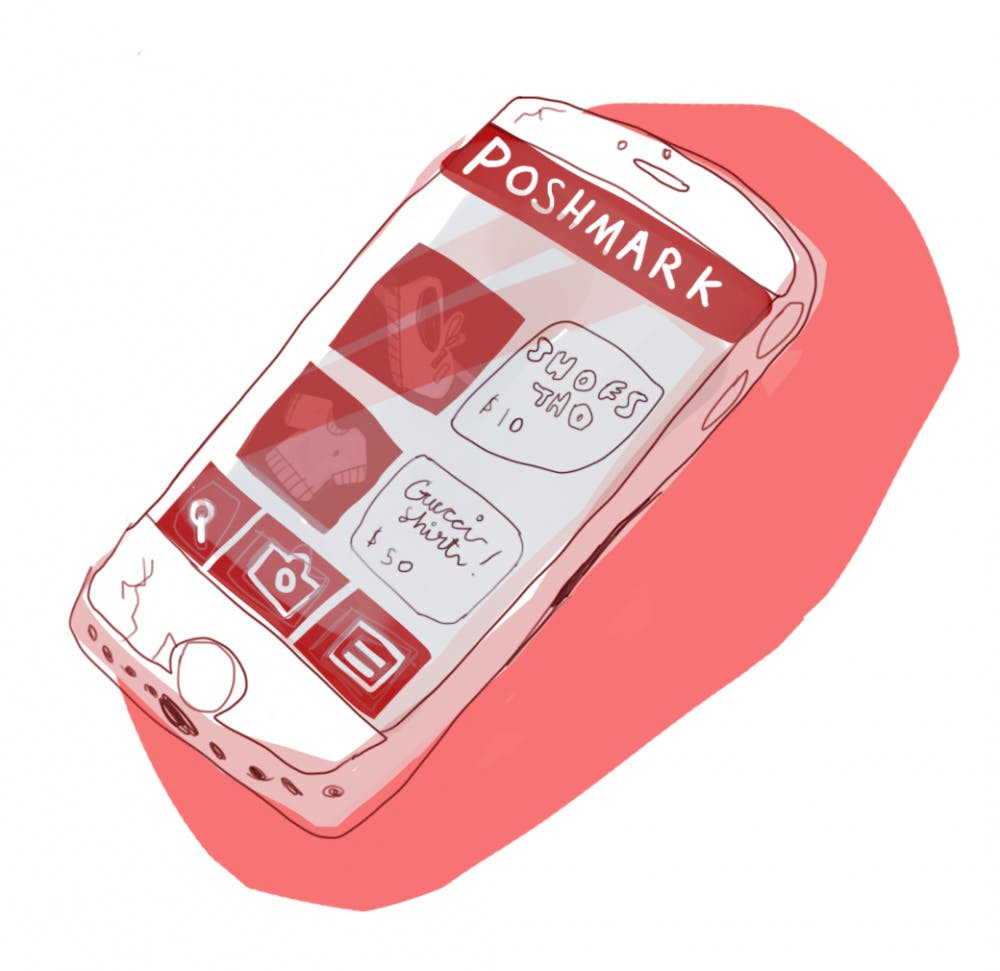Don’t know what to do with that party outfit you brought to college that you’ve never worn? Don’t worry, neither do plenty of other people. However, there is always someone out there looking for a deal on new clothes—potentially, your clothes. Turn your cramped up closet space into cash with these four apps on which you can buy and sell clothes.
Poshmark
Pros: All you have to do to put your clothes on the market is take a photo of what you want to sell. But better photos are more likely to bring in more sellers. Poshmark is a social app where you can generate loyal customers and negotiate with them. Much like social media apps, you can like and follow other people’s closets. You can also use credit earned from selling clothes on the app to buy other clothes on the app.
Cons: For every sale under $15 Poshmark takes in $2.95, and 20% for sales more than $15. Postmark can be time consuming, because the more time you spend on the app, the more likely you are to sell clothes.
thredUP
Pros: With thredUP, you order a prepaid bag known as a “cleanout kit” and put the clothes you want to sell in it. A direct deposit goes into your bank account after a few weeks depending on which items thredUP decides to take. Unlike Poshmark, you don’t have to list every item and wait for buyers to contact you. thredUP will do most of the work, like take professional photos of the items you send.
Cons: thredUP chooses the prices for you, and they don’t take everything you send. For the clothes they don’t end up taking, you can either choose to donate them or have them send a bag back with a fee.
Depop
Pros: To sell clothes, you upload photos of what you’re planning to sell, select brands from a list, and choose the category of what you’re selling. Clothes sold on Depop are considered to be more unique and “trendy,” as most of its customers range between 16 and 26. Much like Poshmark, you can like other people’s posts.
Cons: Depop collects 10% of any sale, no matter the price. Depop is known to have a lot of scammers who charge triple the price of something bought online from eBay. The app also tends to promote users who receive more traffic.
eBay
Pros: eBay is probably the oldest and most famous company on this list. It is a platform known to give you the most freedom when it comes to selling your clothes. You can customize prices, auctions, and shipping methods; you can even set what time you want your listings to appear. There’s also an analytics feature where you can track demand for products and optimal times to sell.
Cons: It’s harder for people to find what you’re selling unless they actually look for it on the website. When you put an item on the website, you also have to fill out 13 information fields which can be kind of time–consuming.
There are a ton of platforms that you can choose from based on how much work you want to put into selling clothes. Most take some sort of commission from your sales, but not enough for it to take away a huge amount from your profit. At the end of the day, selling clothes you're not planning to wear anyways is an easy way to make money with minimal effort. So go digging in your closet and hop on one of these apps!







